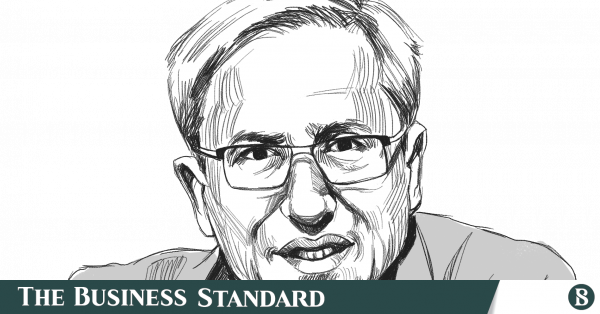There are three major barriers to growth in Bangladesh currently. First of all, high inflation is hampering growth. The second one is the dollar crisis. And third is the vulnerability of the financial sector
Trend of the key macroeconomic indicators, including imports, exports, private sector credit and investment, indicates a slightly lower growth of Gross Domestic Product (GDP) in the outgoing year compared with 2022.
However, there is no scope to say that there was no economic growth at all during this time. There has been positive growth in the power generation and agriculture sectors, especially in crop production. But it was not a strong growth overall.
The economy is slightly lower now in terms of GDP growth compared with where it was at the start of 2023. Factors from both the demand and supply side are responsible for slowing the growth.
Analysing the demand side, we find a strong historical and empirical correlation between foreign trade and GDP growth. The growth in our export earnings has slowed down, which means external demand is slower than last year.
We have not found major progress during the last year in terms of investment either. On the one hand, investment demand is low due to various uncertainties. On the other hand, the existing demand cannot be fulfilled due to the dollar crisis and import restrictions.
Commodity prices play as a significant determinant of aggregate demand. The adverse effect of high inflation reduced the private demand. The purchasing power of poor and fixed income earners is decreasing due to continuous high inflation, particularly high prices of food items.
On the supply side, the LC opening and LC settlement data show that there was a bottleneck in the import of raw materials and intermediate inputs throughout the year. As a result, the production capacity is not fully utilised.
On the bottom line, inflation has depressed demand. The dollar crisis, on the other hand, has disrupted supply.
Looking ahead, the global economy is projected to decelerate growth slightly. Apart from the geopolitical situation, the world economy has improved slightly with a slight reduction in inflation.
If the war situation remains unchanged, the price of USD may remain stable. The global interest rates may also decrease. And if it does not decrease, it will not increase.
Commodity prices are also expected to remain stable unless supply is disrupted by closure of shipping routes due to wars. The global outlook looks more optimistic than the same period of the last year.
Apart from the global situation, the GDP growth of Bangladesh depends on success in restoring macroeconomic stability.
There are three major barriers to growth in Bangladesh currently. First of all, high inflation is hampering growth. The second one is the dollar crisis. And third is the vulnerability of the financial sector.
The upcoming year will be a better year than the outgoing year in terms of growth if vulnerabilities do not increase and if the dollar crisis is contained as well as inflation is controlled. This is assuming everything else is fine. But the reality is that many things may not remain constant in the coming year.
If there arises any barrier to trade in the form of higher tariffs or sanctions for political reasons, labour rights, human rights or any other issue, growth will be hindered.
Regardless of the geo-political situation, exports can be maintained if there are no barriers to trade. The export sector and other related sectors will suffer if tariffs are increased or non-tariff barriers are erected.
There are other risks beyond these like rising prices of oil, gas and electricity. Any further rising interest rates will also put growth at risk.
Apart from this, there are ongoing problems like the risk of our political stability, lower institutional capacity and reluctance to reform.
The author is the former lead economist of the World Bank’s Dhaka Office.
















